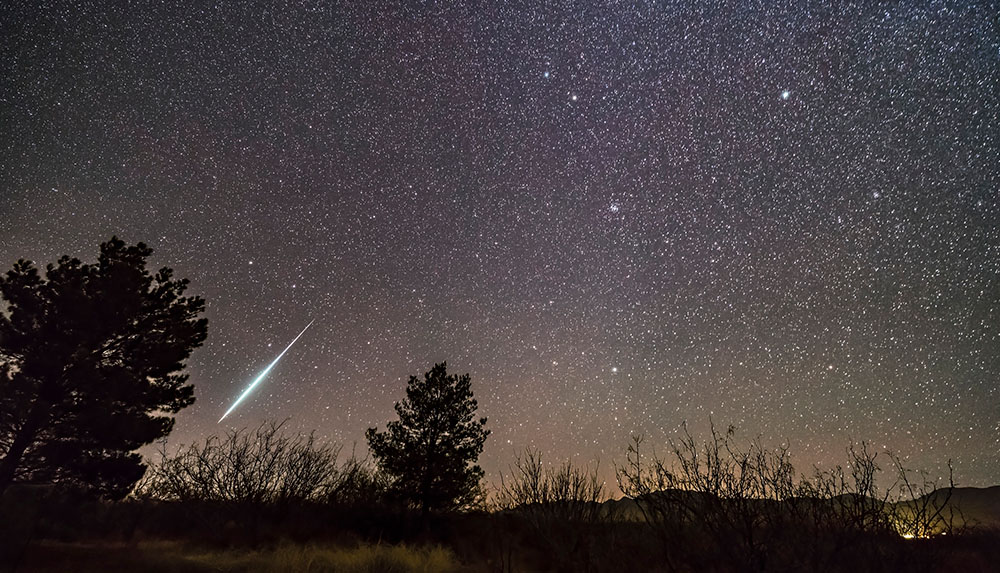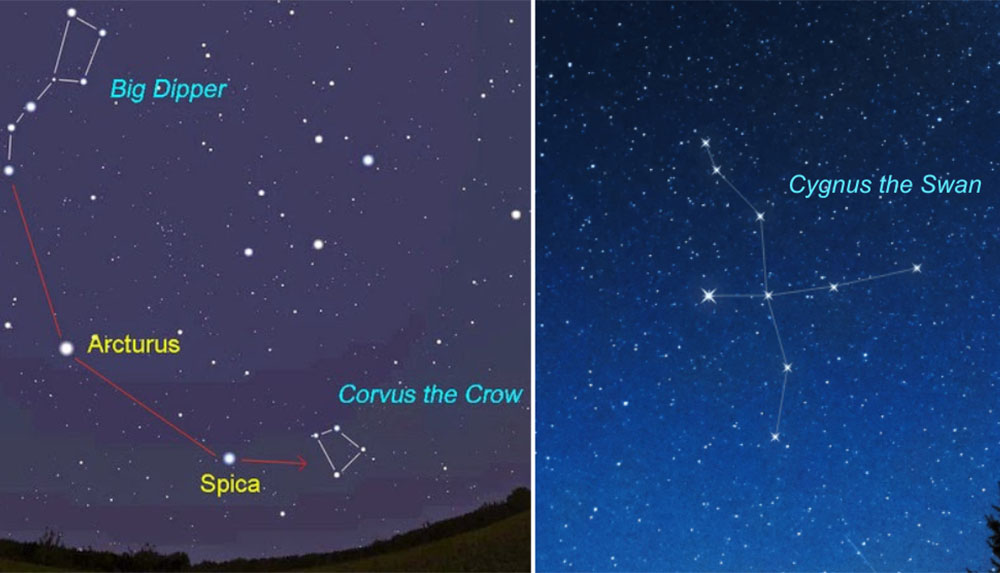Riverside Camping Under the Stars
Posted May 23, 2024 by Reily Schultz
Multi-day rafting trips are our favorite adventures for many reasons. The opportunity they provide to disconnect from the world and reconnect with yourself and your friends is a one-of-a-kind experience. As your evening at camp winds down, we invite you to take a moment to look up at the skies. Remember that taking a break from the hustle and bustle of daily life also means taking a break from all of the accompanying lights and sounds. As you raft away from light pollution you may get to see the night sky as never before.
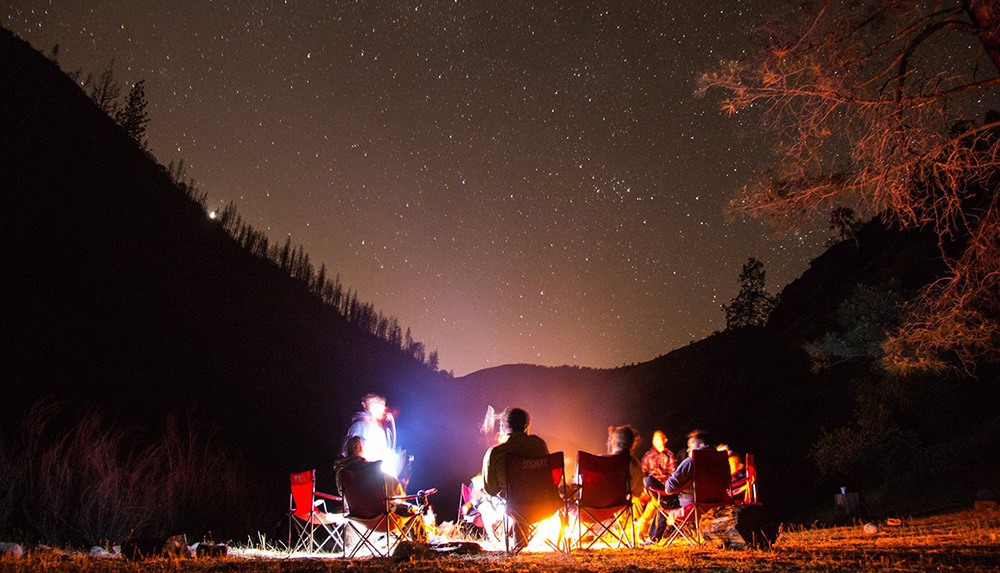
Make A Wish
What do you think of when you think of star gazing? Shooting stars, of course! While you can spot a falling star any time of year (if you have a good eye) there are periods where you’ll have a better chance. During a meteor shower, meteors will rapidly stream across the night sky following a single specific direction. Once you see your first shooting star of the evening, make note of its origin. This area of the sky will be the best place to watch for the remainder of your observation. The best time to view a meteor shower is always around or after midnight, and during a New Moon phase.
The Perseids are the most popular meteor shower, reaching their peak in early August. At that time you would be able to see as many as 75 meteors per hour! With the impressive duration of this event you will have several chances throughout the rafting season to catch these falling stars on a night with a New Moon.
There will be plenty of opportunities to coincide your multi-day rafting trip with a meteor shower – you may not catch the peak of one, but there are a number of meteor showers ranging all the way from July through December. One of the amazing things about these celestial events is that they can be viewed from any location! It’s true that dark skies make for better star gazing, but these events are so bright and have such a large scope that you will be able to make your wishes from both the bottom of a secluded river canyon, as well as the grassy knolls of Camp Lotus on a South Fork American 2-Day trip. Check out the Meteor Shower Calendar for more details about what meteors you will see in the night sky at camp.
It’s Not Just a Phase
One thing that is going to make a big difference in your stargazing experience is the moon. If you are excited about finding the best star gazing this Summer, consider lining up your rafting adventure with a New Moon, or as close to it as you can. A New Moon occurs once every 28 days when the moon comes between Earth and the Sun, blocking any light that would normally illuminate the landscape throughout the night. The lack of moonlight lets the stars take center stage.
On the other hand, wilderness camping under a Full Moon is also a memorable experience. The glow from the moon lights up the whole river canyon, sometimes to the point where you do not even need to turn your headlamp on. Camping under a Full Moon may not offer the best star gazing, but it does offer visibility and comfort to folks who may be new to the experience.
Lunar Eclipses- when the Earth’s shadow is cast across the moon- are well-known celestial events to watch out for. Whether you get to observe a full or partial eclipse, it’s an amazing thing to see. Eclipse locations and frequencies vary year to year so be sure to check out what phenomena will be visible during your rafting trip. Our early Spring and early Fall rafters will have the best chance of spotting an eclipse.
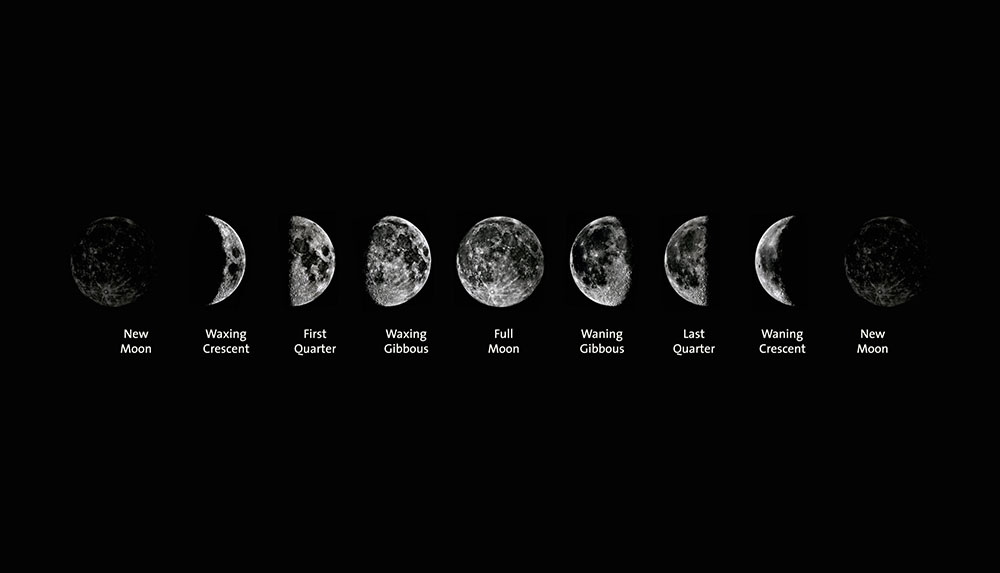
Satelites
While we fully acknowledge that man-made objects orbiting in space are not stars, they sure are cool to see! Satellites travel across the sky in a manner similar to an airplane with a constant speed. Airplane lights will flash red and green whereas a satellite will remain constant with a white or yellowish hue. There are thousands of these devices orbiting the Earth so you have a pretty good chance of spotting one. Keep an eye out for the StarLink satellites specifically- if you’re fortunate enough to be stargazing in the days after a launch, you’ll get to see a trail of up to 30 satellites lining up as they make their ascent.
Want another cool man-made craft to look for? How about the International Space Station! You can actually see the station’s orbit right around sunrise or sunset. Look for, as NASA states, “the third brightest object in the sky.” Timing is an important factor in spotting the ISS. Sometimes you will be so lucky as to have several viewings in a week, other times you will only have one opportunity in a month depending on its orbit.
Common Constellations
You do not need a telescope or any fancy equipment to do some star gazing while you’re camped out on the river. You just need to look up, let your eyes adjust to the dark, and look for a few defining patterns to identify some famous constellations.
Different constellations are visible throughout the year, but there are a few constants in our California skies. The most recognizable patterns being Ursa Major and Ursa Minor – the Big Dipper and Little Dipper! These constellations each consist of 7 stars, each forming a “bowl and handle.”
The Little Dipper is home to another one of the sky’s most famous stars – Polaris. Commonly referred to as The North Star, Polaris is the last star along the ‘handle’ of the Little Dipper. This star is uniquely positioned in the Northern skies and has become a guiding light for many travelers. When you are facing Polaris, you are facing True North and can find accurate directions from there. While you’re rafting here in California, this star will be visible above the Northern horizon.
In spring and early summer, you may be able to spot Corvus the Crow. This small constellation consists of a small four-sided ‘sail’ that can be seen atop the tree line of the Southern sky.
When you are riverside camping during the height of summer, look for Cygnus the Swan – also known as the Northern Cross. Cygnus looks like a cross pointing North-East with a double star (two stars very close together, almost appearing as if they are one star) at its base.
The Milky Way galaxy will likely be visible wherever you are camping for your multi-day rafting trip! This one is the easiest to spot, and by far one of the coolest.
Pro tip: it takes about 20 minutes for your eyes to adjust to the dark after looking at bright light. Headlamps with a red light setting are a great evening alternative to white light.
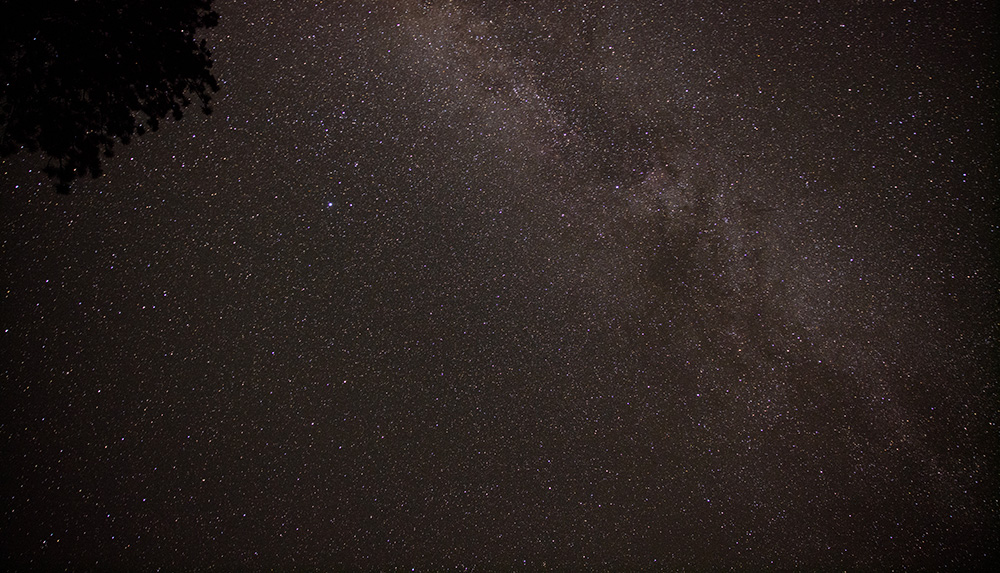
How to Spot a Planet
When you look up at the night sky, pick out the biggest and brightest star you can find. Got it? Well, that’s likely not a star you’re looking at at all! Planets within our solar system are visible much more often than most folks recognize. Sometimes identifying balls of lights as planets vs. stars is tricky, but there are some details to look for that make it a bit easier to spot the difference.
- Look for color. Planets will often have a hazy color about them. Mars, for example, is a hazy red, and Venus is slightly green. Stars are fairly constant in their glimmering bright white coloring.
- Unwavering light. Stars twinkle, planets do not. If the point of light you are watching flickers, dims, or fades from your peripheral vision it is a star.
- Know where to look. The planet you were observing an hour ago is likely across the sky from where it started by now! As the Earth turns, the planets will move in an arc across the night sky, whereas the more distant stars will look relatively stationary. Mercury, Venus, Mars, Jupiter, and Saturn can all be spotted against a darker background of stars.
- Know when to look. It is always exciting to identify a planet in the night sky, but our excitement sadly doesn’t influence the planet’s paths. There may not always be planets visible in the night sky, but a constellation or two will be!
Want to Learn More?
Forward paddle into astronomy! Camping under the stars next to the river and seeing views that are completely new has sparked an interest in rafters of all ages and backgrounds. While we encourage you to leave your phones at home to help you disconnect on your rafting trip, there are some pretty cool resources out there to help further your curiosity.
- SkyView: This mobile app offers a free version of an interactive map of the stars. You can hold your camera up to the night sky and the app will identify the star, planet, or constellation you are looking at.
- Spot the Station: NASA created an app that lets us track the International Space Station
- Keep up with NASA’s Skywatching recommendations so you can set yourself up for the ultimate stargazing experience on your next multi-day rafting trip!
Astrophotography Tips
We strongly recommend leaving any expensive camera equipment at home during your rafting trip and encourage you to live in the moment and take some mental pictures instead. Whitewater rafting involves a lot of… well… water, that can pose a threat to your equipment. But, if you feel strongly enough about capturing some images that you are willing to risk potential water damage, bring your phone along and test its capabilities!
If you choose to bring your phone…
- Cameras that have a ‘night or astro mode’ are ideal (but often fancy)
- Long exposure shots are helpful to capture all the star light.
- Do a little editing. Small details like de-hazing the image or sharpening edges can help the picture translate better.
- Tripods can be a helpful tool for this kind of photography, but we recommend leaving the equipment at home and getting creative with what you have access to. We hear that river rocks are pretty multi-purpose…
